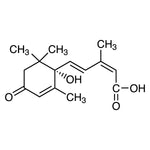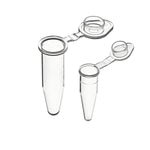You have no items in your shopping cart.
In molecular biology and genetics, two types of DNA often discussed in research are covalently closed circular DNA (cccDNA) and circulating cell-free DNA (cfDNA). While both play critical roles in scientific and medical research, they differ significantly in their structures, origins, and applications.
The main difference between cccDNA and cfDNA is that the former is a stable, circular form of viral DNA that persists in infected cells (e.g., hepatitis B), while the latter refers to fragmented DNA circulating freely in the bloodstream, often released from dying cells. Biofargo Inc. is proud to offer both cccDNA and cfDNA kits to support any kind of DNA analysis.
Key Differences: cccDNA vs. cfDNA
| cccDNA | cfDNA | |
|---|---|---|
| Structure | Covalently closed, double stranded, up to a few kb | Linear, double stranded, 80-250bp |
| Origin | Plasmid phage, virus, mitochondria | Human plasma, urine |
| Application | DNA Isolation | Early detection of cancer, prenatal testing |
| Catalog SKUs | 220501, 220502 | CF-DNA-301, CF-DNA-302, CF-DNA-303 |
Structural Differences
cccDNA (Covalently Closed Circular DNA): cccDNA refers to a circular DNA molecule where the ends of the DNA strands are covalently bonded, forming a closed loop. This circular structure is compact and resistant to exonuclease degradation due to the absence of free ends. cccDNA is typically found in viruses, such as the Hepatitis B Virus (HBV), and in some bacteria and mitochondria. In the context of HBV infection, cccDNA is particularly important as it serves as a stable template for viral replication and persistence within host cells.
cfDNA (Circulating Cell-Free DNA): cfDNA refers to fragments of linear DNA found freely circulating in the bloodstream or other bodily fluids. Unlike cccDNA, cfDNA is not a stable circular molecule but consists of short DNA fragments, often ranging between 150-200 base pairs in length. These fragments are released into circulation through cell death processes such as apoptosis or necrosis. cfDNA can originate from various cell types, including normal cells, fetal cells during pregnancy, or tumor cells in cancer patients. The linear nature of cfDNA makes it highly susceptible to degradation by nucleases in the bloodstream.
Origins and Functions
cccDNA Origins and Function: cccDNA is primarily associated with persistent infections and certain cell organelles. In the case of HBV, for example, cccDNA plays a central role in the virus’s ability to persist in liver cells (hepatocytes). After HBV infects a liver cell, the viral genome is converted into cccDNA, which serves as a stable, long-term reservoir for viral replication. The persistence of cccDNA in infected cells makes it a challenging target for antiviral therapies, contributing to chronic infection.
In addition to viruses, cccDNA can also be found in bacteria and within mitochondria in the form of mitochondrial DNA (mtDNA). These circular DNA molecules are vital for energy production and various other cellular processes.
cfDNA Origins and Function: cfDNA, on the other hand, is predominantly a product of normal cellular turnover or pathological conditions such as cancer or inflammation. In healthy individuals, cfDNA levels in the blood are low, but they can increase in response to trauma, infection, or malignancies. In cancer patients, tumor cells release fragmented cfDNA into the bloodstream, referred to as circulating tumor DNA (ctDNA). This ctDNA serves as a valuable biomarker for non-invasive cancer diagnostics, disease monitoring, and treatment efficacy assessments, particularly in liquid biopsy techniques.
During pregnancy, fetal cfDNA can be detected in maternal blood, which is used in non-invasive prenatal testing (NIPT) to screen for chromosomal abnormalities in the fetus.
Applications in Research and Medicine
cccDNA Applications: Due to its stability and role in chronic infections, cccDNA is a critical target in antiviral research. For instance, developing therapies that can target and eliminate cccDNA reservoirs in HBV-infected cells is essential for achieving a cure for chronic hepatitis B. Current research focuses on silencing or depleting the pool of cccDNA to prevent the recurrence of viral replication.
In addition, cccDNA found in bacterial cells and mitochondria is used in various genetic studies, including those focused on energy metabolism, organelle inheritance, and bacterial resistance mechanisms.
cfDNA Applications: cfDNA has gained prominence in clinical diagnostics due to its non-invasive nature. Liquid biopsies, which analyze cfDNA in the blood, have become a valuable tool for detecting genetic mutations, monitoring tumor dynamics, and assessing treatment response in cancer patients. Liquid biopsy testing is particularly advantageous in situations where traditional tissue biopsies are not feasible or carry significant risks.
In prenatal diagnostics, cfDNA is used in NIPT to screen for conditions like Down syndrome, offering a safer alternative to invasive procedures like amniocentesis.
Challenges and Limitations
cccDNA Challenges: Targeting cccDNA in chronic viral infections, such as HBV, presents significant challenges due to its stability and resistance to antiviral treatments. Even after the viral replication is suppressed, the cccDNA reservoir can persist in the nucleus of infected cells, allowing the virus to reactivate under certain conditions. Research efforts continue to explore methods for directly targeting and eliminating cccDNA.
cfDNA Challenges: While cfDNA holds great promise for diagnostics, its clinical utility can be limited by the low concentration of cfDNA in the bloodstream, particularly in early-stage diseases. Additionally, distinguishing cfDNA originating from tumors (ctDNA) versus normal cell death can be challenging. Standardization of cfDNA collection, extraction, and analysis methods is necessary to improve the accuracy and reliability of liquid biopsies.
Biofargo's cccDNA and cfDNA Solutions
New to Biofargo this September, we are excited to offer three new cfDNA kits.
-
Human Plasma cf-DNA Extraction Kit (Midi 5mL, 50 Units) (#302)
-
Human Plasma cf-DNA Extraction Kit (Mini 0.7mL, 50 Units) (#303)
In addition to our cfDNA kits, we are proud to continue offering our existing cccDNA kits. These kits can be accessed here:
Conclusion
cccDNA and cfDNA are both vital in understanding various biological processes, yet they serve distinct purposes and present unique challenges. cccDNA plays a crucial role in the persistence of viral infections, while cfDNA has revolutionized non-invasive diagnostics in fields like oncology and prenatal testing. Understanding these differences helps researchers and clinicians leverage their unique properties for therapeutic and diagnostic advancements.























